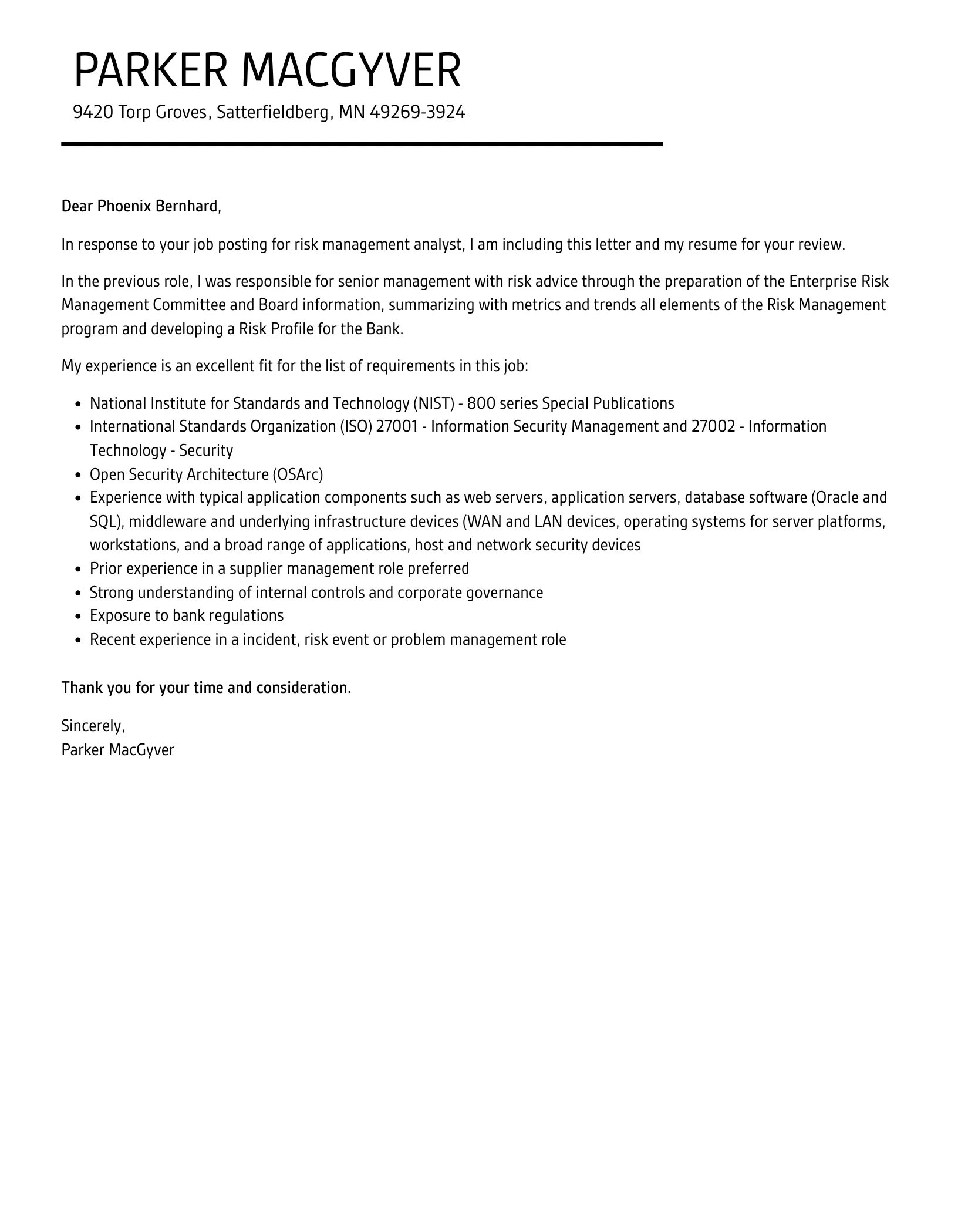Understanding the Risk Manager Role
Before you begin crafting your cover letter, it’s essential to have a clear understanding of the Risk Manager role. Risk Managers are critical to an organization’s success. They are the guardians against potential threats that could harm an organization’s operations, finances, or reputation. The primary responsibility of a Risk Manager is to identify, assess, and mitigate various types of risks, including operational, financial, compliance, and cybersecurity risks. They develop and implement risk management frameworks, policies, and procedures designed to protect the organization from threats. Demonstrating this understanding is the foundation for your cover letter and shows that you understand the core elements of the job you’re applying for. This understanding assures the hiring manager of your ability to contribute from day one.
Key Responsibilities of a Risk Manager
Risk Managers have multifaceted responsibilities, making it critical to highlight how your experience aligns with those duties. Key responsibilities include risk identification, assessment, and mitigation. This involves identifying potential risks, evaluating their likelihood and impact, and developing strategies to reduce or eliminate them. Additionally, Risk Managers monitor risk exposures, report on their findings, and ensure compliance with relevant regulations. They often collaborate with different departments to integrate risk management practices into the daily operations of the organization. Emphasizing your experience in these areas, perhaps by detailing projects where you successfully implemented mitigation plans or improved compliance measures, shows your ability to meet the demands of the role. It’s important to highlight your understanding of not just the role, but how you have succeeded in such capacities in the past.
Essential Skills for Risk Managers
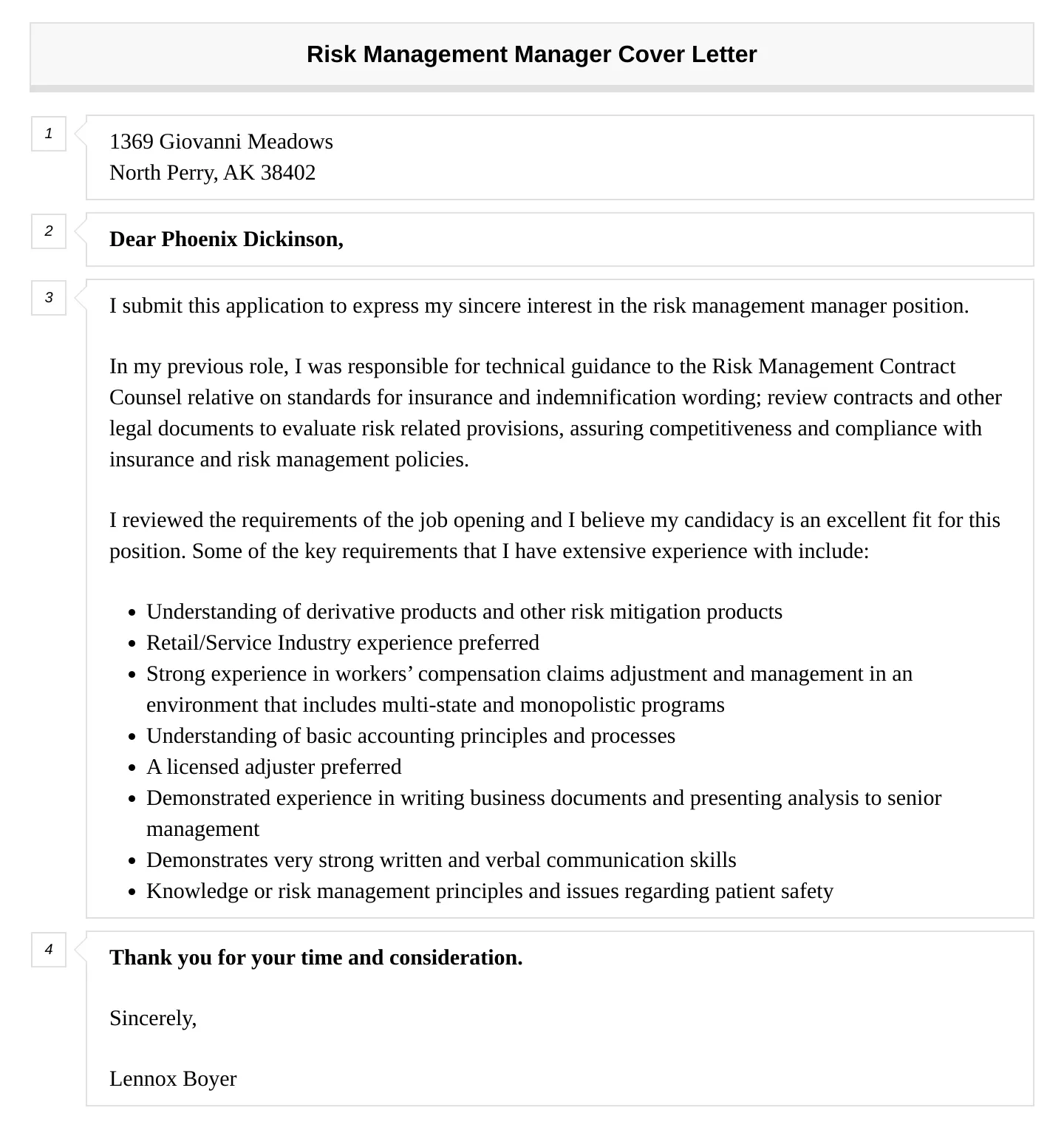
Risk Managers need a diverse set of skills, encompassing both technical and interpersonal strengths. Technical skills include risk assessment methodologies, data analysis, regulatory knowledge, and familiarity with risk management software. Essential soft skills involve effective communication, problem-solving, critical thinking, and leadership, all of which are crucial for effective stakeholder interaction and strategy implementation. When writing your cover letter, show these skills by providing specific instances where you have used them. Whenever possible, quantify your achievements. For instance, mention how you helped to improve risk reduction or compliance scores through your actions. This shows not only your range of skills but also your contributions to past organizational successes.
Top 5 Cover Letter Tips for Risk Managers
Highlighting Relevant Experience
One of the most essential aspects of your cover letter is highlighting experience relevant to the specific job. Tailor your cover letter to the job by prioritizing those experiences and skills that match the requirements. Instead of a generalized overview, highlight projects where you managed or reduced risks. For example, mention the projects where you executed risk assessment frameworks, developed and implemented risk mitigation plans, or increased compliance measures. Quantify your successes whenever possible. For instance, share specifics about how your approaches helped minimize financial losses or increase operational efficiency. By tailoring your letter, you demonstrate to the hiring manager that you have the specific expertise and understand the needs of the position.
Quantifying Achievements
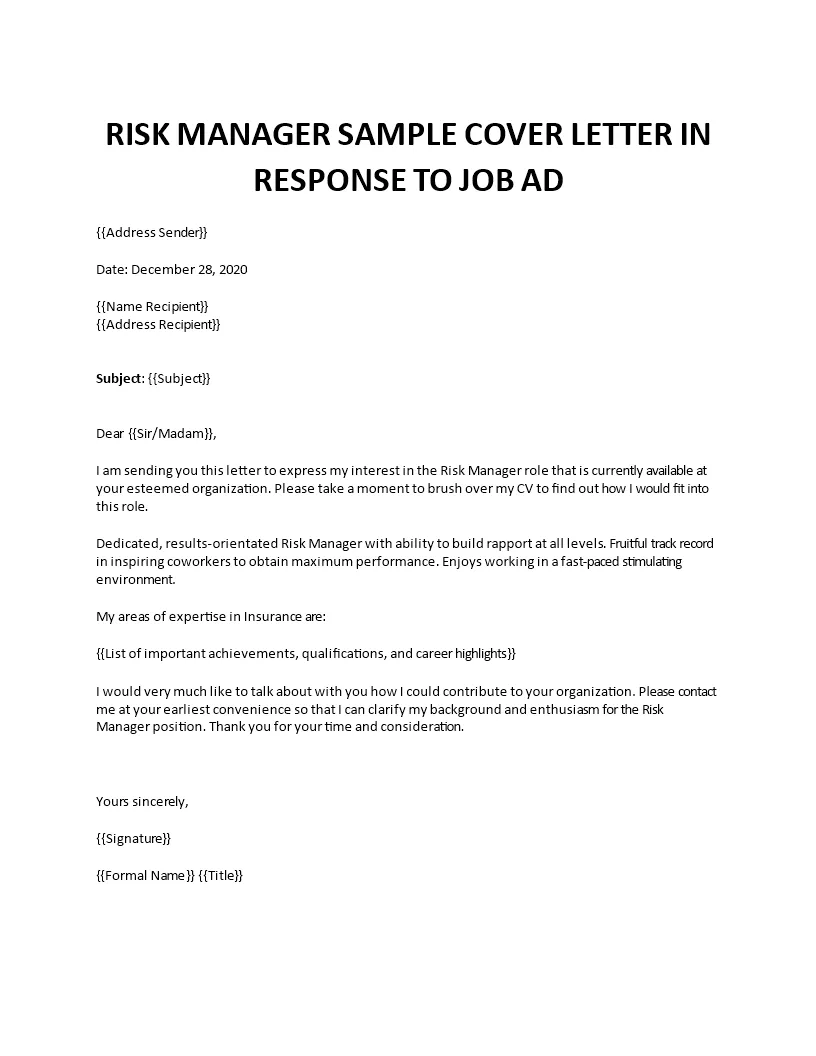
Numbers offer powerful support to your value as a Risk Manager. Always quantify your achievements in your cover letter. Instead of stating that you improved risk management, give concrete data. Did your efforts lower financial losses by a certain percentage? Did compliance rates improve, and if so, by how much? Did your risk assessment framework lower operational incidents? Use numbers and percentages to show the positive impact of your work whenever possible. This approach not only shows your knowledge but also provides concrete evidence of your past successes. By quantifying your achievements, you create a strong case for your candidacy and provide the hiring manager with proof of your contributions to organizational success.
Tailoring to the Job Description
A generic cover letter is often less impactful. Tailor your cover letter to the specific job description. Carefully review the job posting and identify the skills, responsibilities, and qualifications the employer seeks. Adjust your cover letter to these requirements. Highlight relevant experience and accomplishments that align with the job requirements. Incorporate the keywords and phrases from the job description to show that you understand the role and that your skills meet the employer’s needs. This shows that you have spent time researching the company and understanding their needs, making you a stronger candidate.
Demonstrating Understanding of Risk Management
A strong cover letter shows a comprehensive understanding of risk management principles. Highlight your knowledge of risk assessment, mitigation strategies, and regulatory frameworks. Show that you know the specific risks relevant to the organization. This may involve your experience with financial, operational, compliance, and other pertinent areas. Also, you should demonstrate your ability to develop and implement risk management plans, monitor risk exposures, and report findings efficiently. Describe your knowledge of how risk management lines up with the strategic objectives of the organization. Do this by showing how your previous contributions helped business continuity and improved overall organizational performance. Demonstrating an understanding of risk management makes the hiring manager confident in your expertise and shows that you are ready to contribute.
Showcasing Soft Skills
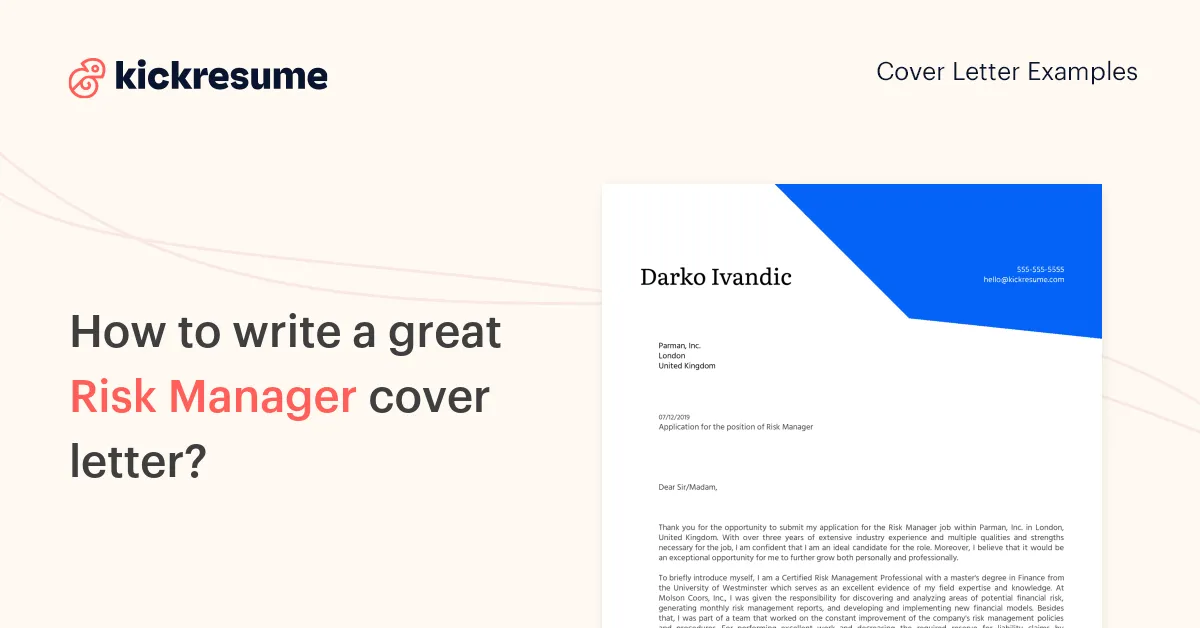
While technical expertise is important, the importance of soft skills cannot be overstated. Your cover letter should highlight your communication, problem-solving, critical thinking, and leadership skills. Offer specific examples of how you’ve used these skills to resolve challenges, communicate complex information effectively, and build relationships with stakeholders. Describe situations where you’ve led cross-functional teams, resolved conflicts, or influenced decisions. These skills show your abilities to work with others. Emphasizing these interpersonal skills demonstrates that you’re not only technically capable but also adept at teamwork, which is vital for success.
Formatting and Structure of Your Cover Letter
Header and Contact Information
Your cover letter should start with a professional header that includes your full name, contact details (phone number and professional email address), and the date. If you are applying for a specific position, include the company’s name and the hiring manager’s name if you know it. The header should be formatted in a clean, easily readable manner. Maintain consistent formatting and use a standard font like Arial or Times New Roman. Proofread the header to ensure that all contact information is correct. A well-organized header suggests professionalism and attention to detail.
Professional Salutation
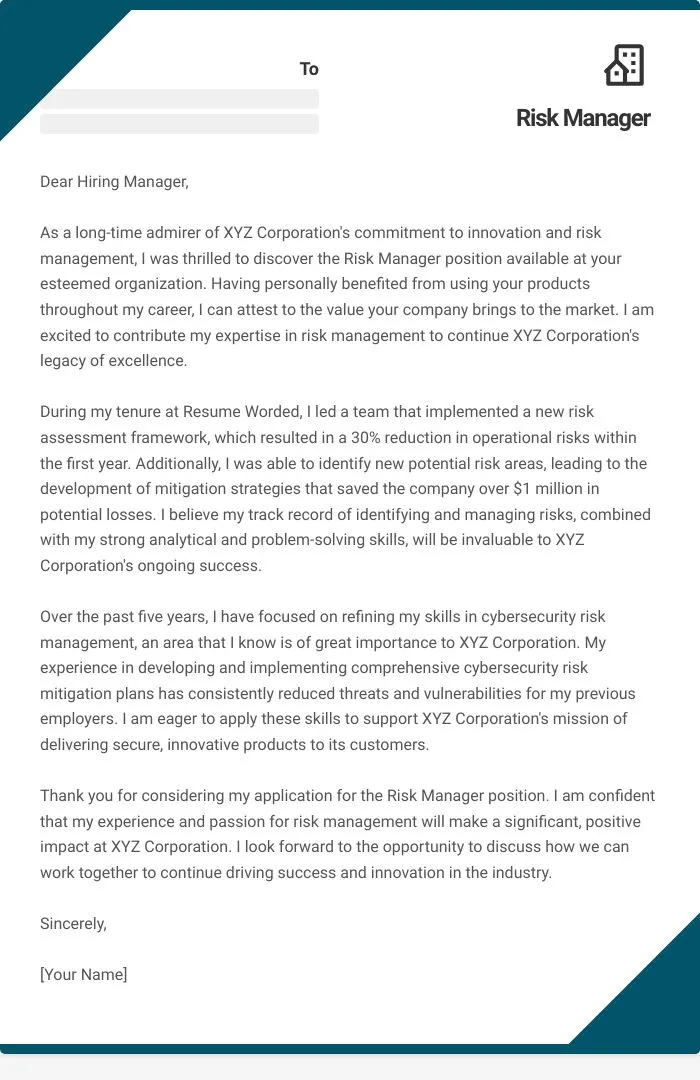
Begin your cover letter with a professional salutation. If you know the hiring manager’s name, use it (e.g., “Dear Mr./Ms. [Last Name]”). If you do not know their name, opt for a generic greeting, such as “Dear Hiring Manager” or “Dear [Company Name] Team.” Refrain from using impersonal salutations, such as “To Whom It May Concern.” Maintain a professional and respectful tone.
Body Paragraphs
The body of your cover letter is where you showcase your qualifications and demonstrate your understanding of the role. Break your letter into several concise paragraphs, each focusing on a specific point. In the first paragraph, mention the position you are applying for and a brief explanation of your interest in the job. Subsequent paragraphs should present your relevant experience, quantify your achievements, and demonstrate your understanding of both the company and the job requirements. Use clear and concise language. Avoid jargon, and make sure each paragraph flows smoothly into the next to create a narrative that shows your ability to meet the demands of the position.
Closing and Call to Action
Conclude your cover letter with a strong closing and a clear call to action. Reiterate your interest in the position and summarize your key qualifications. Thank the hiring manager for their time and consideration. Include a call to action, such as requesting an interview or indicating your availability for a meeting. Phrases such as “I’m eager to discuss how my skills can benefit your team” or “I look forward to hearing from you soon” work well. Ensure that your closing is professional and makes a lasting impression.
Common Mistakes to Avoid in a Cover Letter
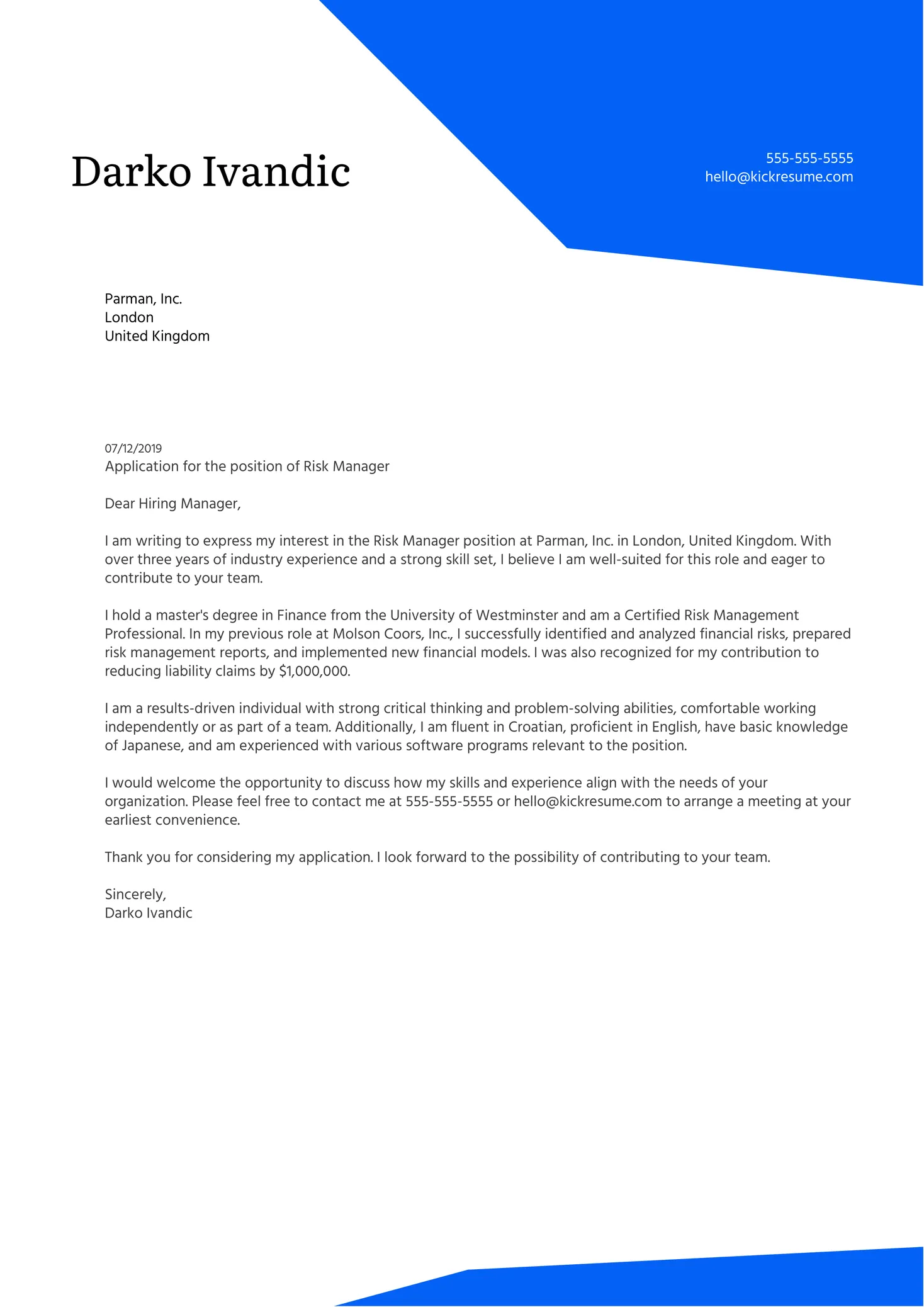
Generic Letters
A common mistake in cover letters is taking a generic, one-size-fits-all approach. Avoid sending the same cover letter to every job you apply for. Customize your cover letter to meet each company’s requirements and values. Research the organization, role, and hiring manager. Show your interest and how your skills can help the company to succeed. Generic letters indicate a lack of interest in the role and the organization.
Typos and Grammatical Errors
Typos and grammatical mistakes can make a bad impression. Review your cover letter for errors in spelling, grammar, and punctuation before you submit it. Read it out loud, use a grammar checker, and have a colleague or friend review it. This ensures that your cover letter is error-free and professional, which shows attention to detail.
Lack of Focus on Achievements
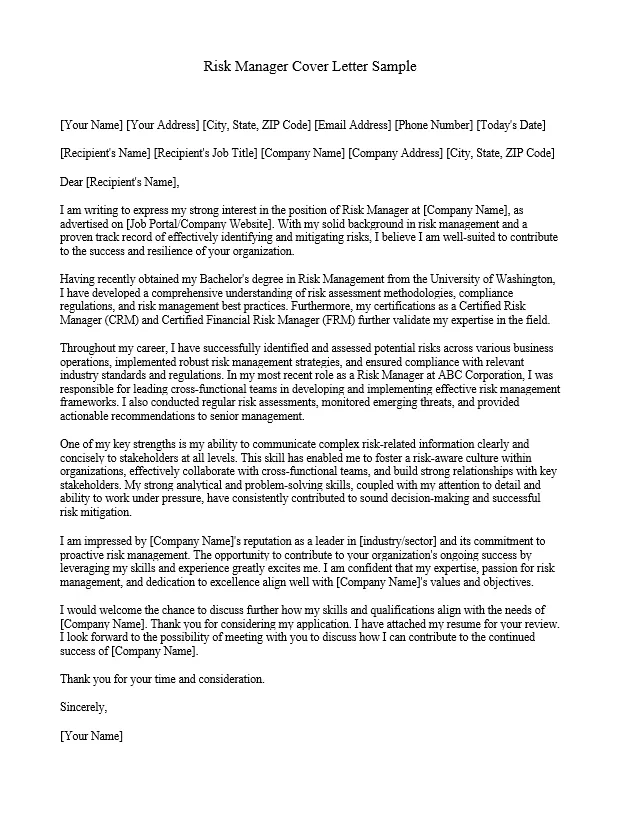
Your cover letter is a chance to showcase your accomplishments. Don’t just list your responsibilities; instead, highlight your achievements and quantify your contributions. Talk about how you’ve handled risks, improved processes, and met organizational goals. Focus on results. This will demonstrate your value to the hiring manager, helping them see your potential benefits. Use your cover letter to highlight your skills and prove your expertise.
Failing to Research the Company
Not researching the company is a big mistake. Before writing your cover letter, learn about the organization, its mission, values, and recent activities. This research shows your genuine interest in the company. It helps you tailor your cover letter to their specific needs. It also helps you to show how your skills and experience align with the company’s goals. Show the hiring manager that you understand their business and how your qualifications relate to the role and their priorities. This will improve your chances of being chosen.
Conclusion
A well-written cover letter is critical for landing a Risk Manager position. By applying these tips, you will be able to increase your chances. Remember to tailor your cover letter, avoid common mistakes, and maintain professionalism. A strong cover letter is your opportunity to make a great first impression, setting the stage for a successful interview and a fulfilling career. Good luck with your applications!
